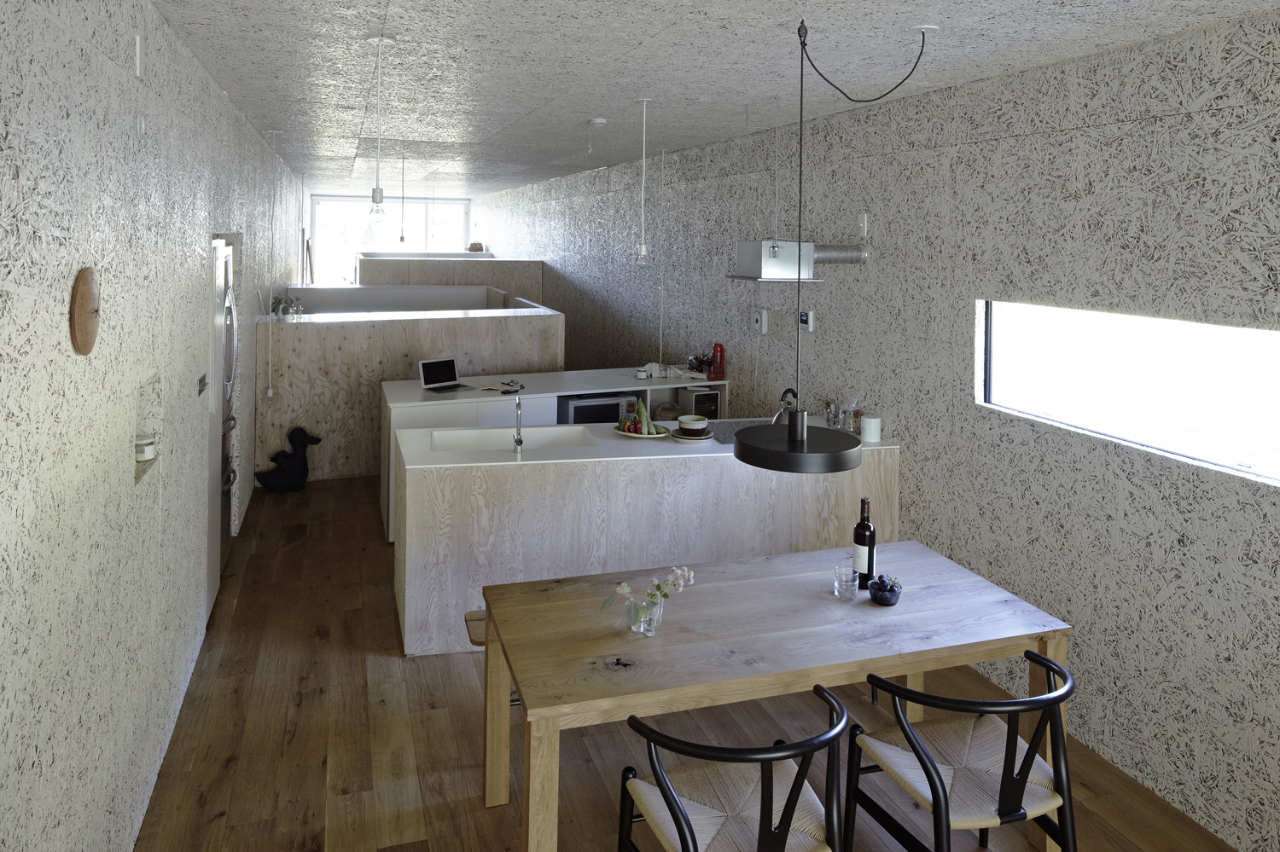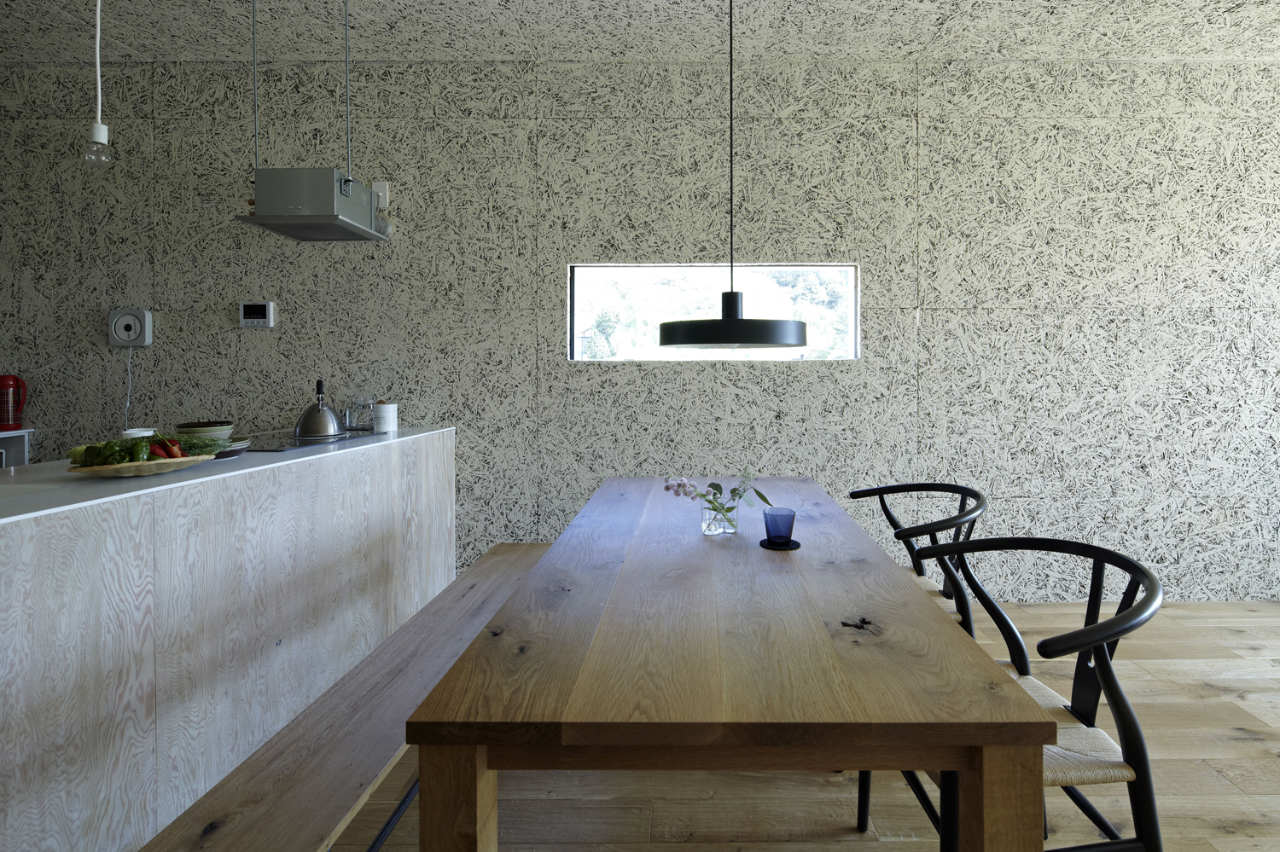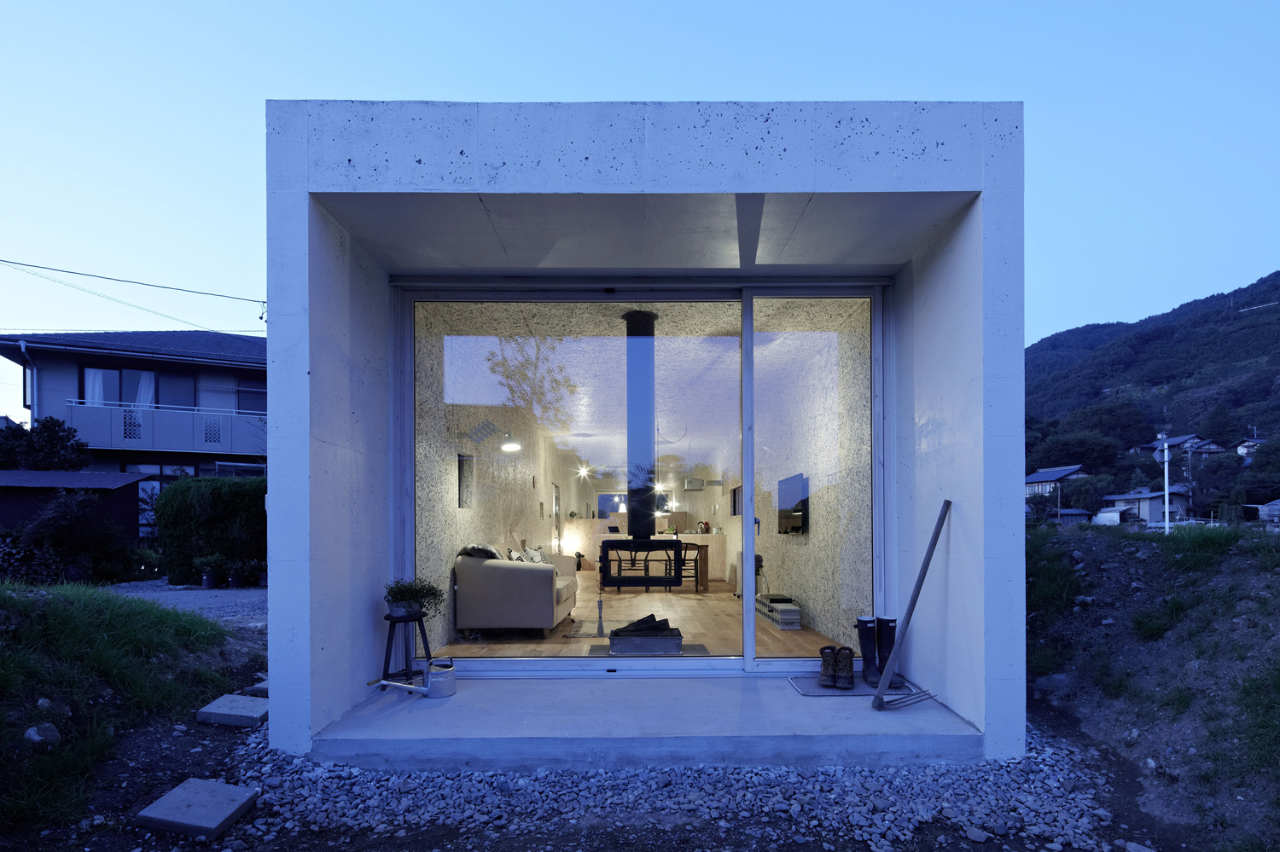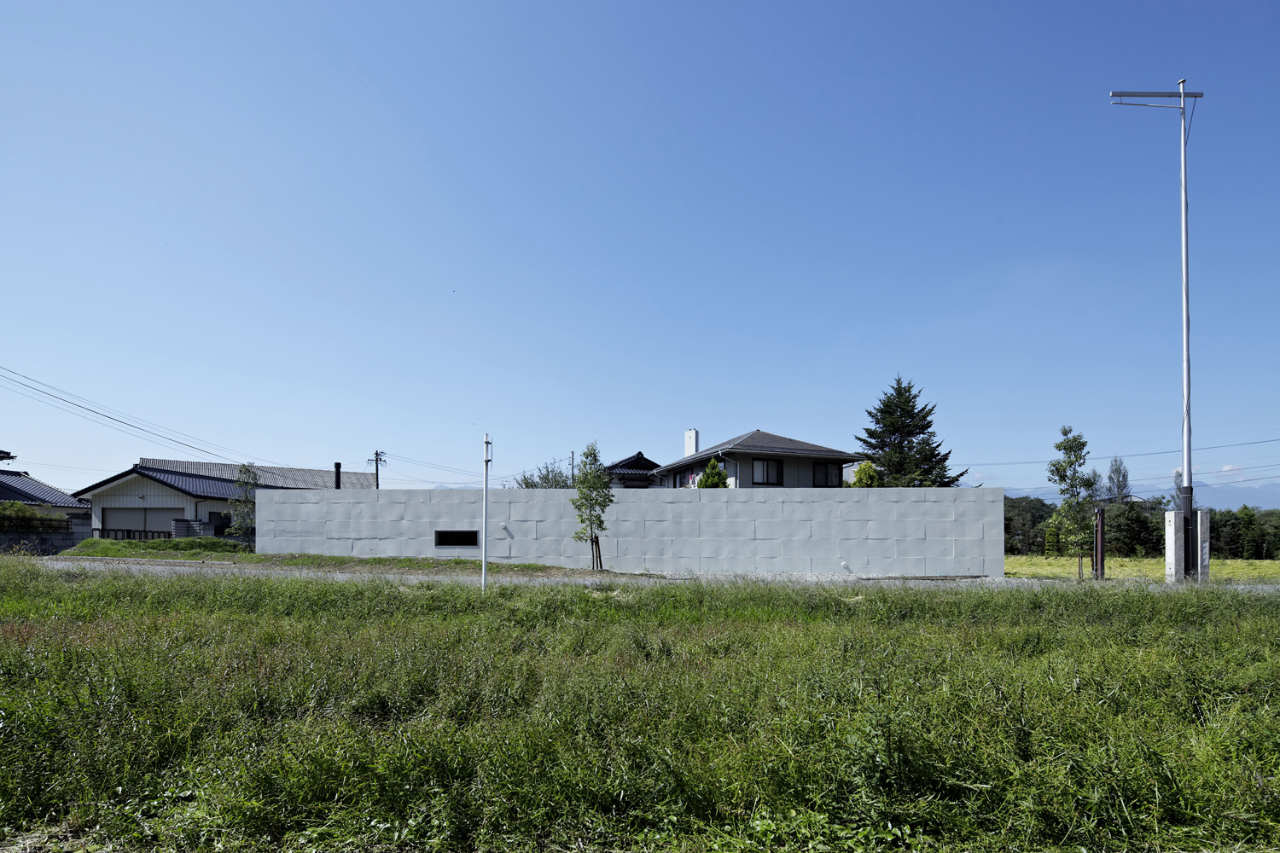Low-Budget House Inspired by Nests

When budget is the most important consideration in designing and building a home, economy tends to outweigh aesthetics and even usability. But with ‘MYZ Nest’, a house inspired by animal nests, Japanese architecture firm no.555 has proven that even small and humble residences can be thoughtful and visually interesting.
The rectangular residence beside a rice field in Matsumoto is low to the ground and partially built into the earth to echo the feeling of a burrow, like that of rabbits. This creates a tunnel effect inside, and the soil built up around one side provides additional insulation.

Inside, the walls are lined with cement-bonded wood chip boards, a material that is common in low-budget housing but often covered with other materials. Here, the texture of the wood chips is left visible intentionally because the designers felt that it calls the compacted twigs of a bird’s nest to mind.
The open space inside, lacking any interior walls, enables residents to divide the home as they see fit, adapting it to their own needs. One large floor-to-ceiling glass wall of this low budget nest house enhances the residents’ connection to the natural environment.
“My initial instinct was to build a structure that captured the feeling of the surrounding natural environment,” says the architect. “Architecture being an artificial construct made this a challenge. Rather than simply imitating forms found in nature I tried to create an abstract representation that still imparts a feeling of nature.”
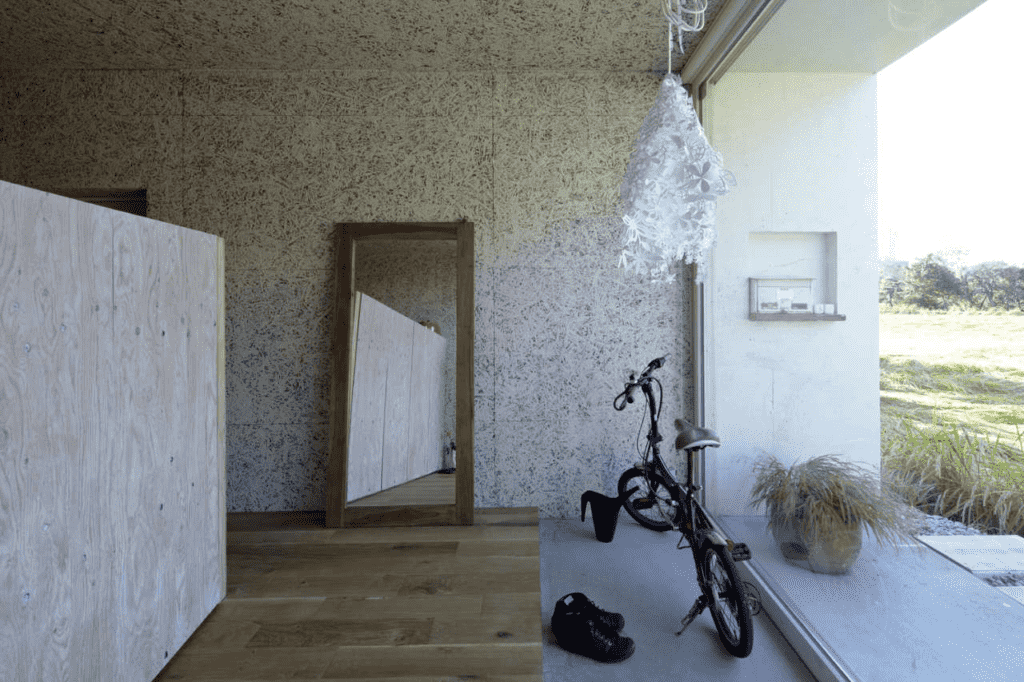
“The building filled with soil, and low proportions. Levels in each room is a little lower, the animals like to enter in ‘nest.’ Also the concrete wall is like a bird nest of woven grass. I aimed ‘the quiet architecture’ idyllic landscape.”





